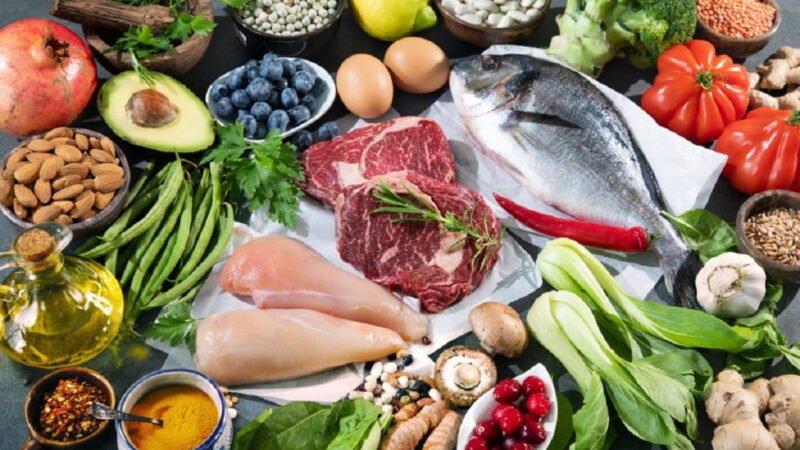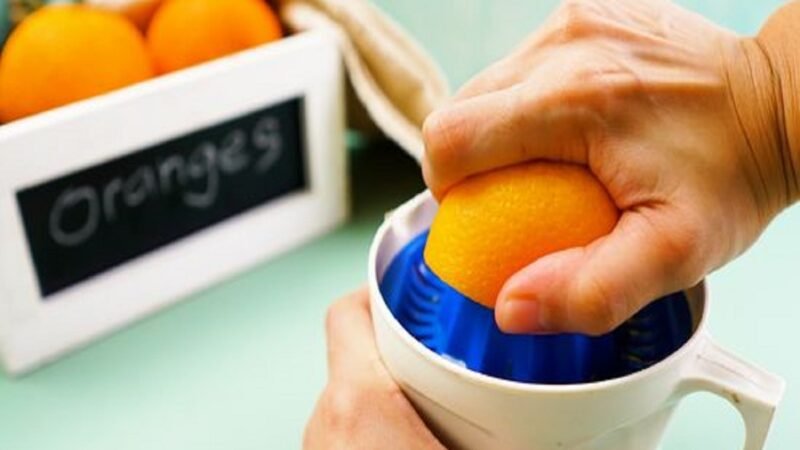When You Display Food in ICE, The Food Must?

When you display food in ICE, the food must be colder than 41°F (5°C). The food must be in an airtight container with the name of the product, the manufacturer’s code number, and the date it was frozen written on it. If you make your own ice cubes to keep food cold, make sure to wash them before you put them in the freezer. Also, you don’t have to do anything to freeze fruits or vegetables.
If you use ice to keep food cool at a salad bar or meal display, make sure the ice is at least as high as the food in the pan or dish. When putting things on ice or putting food on ice to show it off, the food must be colder than 41°F.
Table of Contents
When You Display Food in ICE, The Food Must?
- Be less than 35° f (1.6° c)
- Be at least 41° f (5° c)
- Be at least 45°f (7.2°c)
- Sit on the frozen water
How Long Can Food be Displayed in Cold Storage?
Use the right equipment to keep cold food on a buffet at 41° F (5° C) or lower when it is on display. If you can’t do this, you can leave food out of the fridge for up to four hours, but only the first time. Check the temperature of the food often and know how long it has been out or on display.
How do you present chilled food?
It has been proven that putting food in ice when you put it in the fridge cuts down on the amount of bacteria that will grow. This means that the food will last longer. When putting food in ice, there are a few things to keep in mind:
- The food should be cold, but not solidly frozen. Food that has been frozen won’t keep well in the fridge.
- Food that is put on ice should be covered, because bacteria can grow in the open air. If the food will be eaten within a few hours, it can be left out in the open and put in a clear container.
- Putting food on ice should be done in a separate container from other foods. So, the food can be kept for a few days without getting spoiled by other foods.
What temperature should food be shown at?
Food should always be kept cold (5°C or colder) or hot (60°C or hotter) when it is being stored, shown, or moved. If your organization stores, shows, or moves potentially dangerous food, it needs a probing thermometer that can reliably measure the food’s temperature to +/-1oC.
What Food Can Be Displayed Directly on Ice?
Ice that is used to cool the outside of food, canned drinks, or tools can’t be eaten. Foods that are kept on ice must be wrapped so that water doesn’t get in. Raw vegetables, whole fruits, and some types of meat are the only things that can be kept in direct contact with ice that aren’t in a package.
The Ice Must Be Made from Water That Is Safe to Drink
If you put food on ice to show it off, the ice must be made from safe-to-drink water. This means that the water used to make the ice shouldn’t have any harmful substances in it, like chlorine or fluoride. If there are contaminants in the area, they will get into your food and make it unsafe to eat.
The best way to make sure of this is to use ice made from water that came in a bottle. The word “purified” is often used to describe bottled water. This means that it has been treated with reverse osmosis or distillation, which both clean the water of all impurities.
But if you don’t have bottled water, you can use a Brita filter or another type of filter made for drinking water to clean tap water (not an aquarium filter).
When you put food on ice to show it off, the ice must be made from safe-to-drink water. Distillation or reverse osmosis should be used to filter and clean the water used to make ice. It should also be made acidic with citric acid until the pH is between 4.0 and 6.0. Pathogens like Salmonella, Shigella, and Listeria monocytogenes will not be able to grow in this way.
If you want to make ice from tap water, make sure it has been treated properly. Do not treat the water with chlorine bleach or even baking soda. Both of these can change the way your food tastes, and if they come into contact with certain foods, they can cause chemical reactions that could be bad for your product or your customers’ health.
Advantages of Using ICE:
- Effectiveness of Cooling
- Temperature Regulation
- Moisture Retention
- Safe and affordable
- Convenience & Availability
Conclusion on When you display food in ice, the food must?
Ice is used in the food business to keep foods fresh and to serve drinks on hot summer days. However, it is important to understand the potential dangers of using ice with foods and how you can use ice safely to display food. If you keep these three things in mind when putting food in ice to show it off, you can make a great presentation that won’t hurt anyone.
Frequently Asked Questions (FAQs) about When you display food in ice, the food must?
What do you use to keep cold things cool until you serve them?
Coolers are used to store cold things. They are insulated and made to keep food cold for several hours.
How cold is food that’s been put on ice?
Cold foods should be kept at 40 °F or colder. Keep cold foods refrigerated until serving time. If food is going to stay out on the buffet table longer than 2 hours, place plates of cold food on ice to retain the chill.
What is the temperature danger zone Quizlet for food handlers?
When food is between 41°F (5°C) and 135°F, it is in the Danger Zone (57 oC) (57 oC). The danger zone is so named because germs grow rapidly between these temperatures.
What food may be cold held directly on the ice?
The only unpackaged foods that may be stored in direct contact with ice are raw vegetables and whole fruits.
What does it mean to hold food cold?
Cold holding stops germs from growing when food is kept at cold temperatures. This lowers the risk that someone will get sick from eating food. Check the Temperature Often. Make Sure to Label and Keep Chilled.
What is the refrigeration zone range?
between 40 xb0F and 140 xb0F
What temp should food on ice be?
40 xb0F
Which food can be set directly on the ice?
Foods like chicken salad and desserts in individual serving dishes can be placed directly on ice, or in a shallow container set in a deep pan filled with ice.
What foods can be stored in water or ice?
(C) Whole, raw fruits or vegetables; cut, raw vegetables such as celery or carrot sticks or cut potatoes; and tofu may be immersed in ice or water.
What is the role of refrigeration in food preservation?
Cold temperatures help food stay fresh longer. The basic idea behind refrigeration is to slow down the activity of bacteria (which all food contains) so that it takes longer for the bacteria to spoil the food. … Refrigeration and freezing are two of the most common forms of food preservation used today.
What is the maximum temperature for holding cold potentially hazardous food?
Cold Food. Hold cold foods at 41 degrees Fahrenheit or less and check the temperature every four hours. If the temperature of the food at four hours is greater than 41 degrees Fahrenheit, the food must be discarded.
What is the temperature danger zone in food handlers?
Bacteria grow most rapidly in the range of temperatures between 40 °F and 140 °F, doubling in number in as little as 20 minutes. This range of temperatures is often called the “Danger Zone.” Never leave food out of refrigeration over 2 hours.
When displaying food in ice, must the food be quizlet?
To keep food cold while presented in ice, follow these steps: The ice should be at the same level as the meal. The meal must be at least 41 degrees F.
When do you put food on display and ice it?
If you’re using ice to keep food cool on a salad bar or food display, make sure the ice is at least as high as the food in the pan or dish. When putting food in the ice, it must be colder than 41°F. To prevent germ growth, cold food is kept at 41°F or lower.
Which food can be cold held directly on ice?
The only unpackaged foods that may be stored in direct contact with ice are raw vegetables and whole fruits.
Read More:
Which of the Following Foods Does Not Support Bacterial Growth?
Which Food Safety Practice will Help Prevent Biological Hazards?
When are Food Workers Required to Wear Gloves?
When Should You Refuse to Accept Food in a Shipment?
How Would Early Americans Dry Food?






One thought on “When You Display Food in ICE, The Food Must?”
Comments are closed.